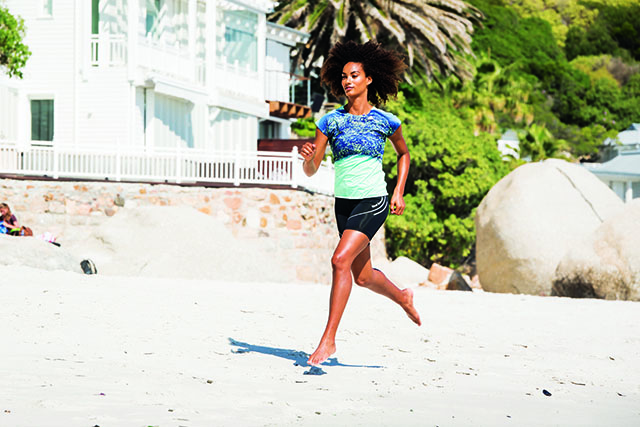Master Your Running Speed & Strength
Try one of these strategies – to take your speed and strength to the next level. – By Jenny Hadfield

A breakthrough in running, by definition, is an instance of achieving success in a particular run or race. You’ve already begun to set yourself up for faster runs by investing a year in developing your base.
Here’s how to have a breakthrough year (without getting hurt).
Set long-term goals
Rather than putting all your eggs into one basket (or race), plan several race opportunities to allow yourself to build up speed, strength, pacing skills, and overall experience. You might break your year down into two core seasons. March to May is for training, then from June to August scatter a few shorter races (5-Ks and 10-Ks) and one half marathon near the end. Then, take September to recover before starting to train again, from October to November. Again, you might plan some shorter races first, and finish with a mid- to late-summer half marathon.
Run consistently
This is the number-one way runners improve their performance, one step at a time, one kilometre at a time, one day at a time. When you’re consistent, you develop and maintain a solid base of running fitness from which you can improve. Planning your year into seasons and including training, racing, recovery, and maintenance cycles is a sure-fire way to run consistently, with less risk
of injury.
Progress gradually
Elite runners progress their running over years of training and racing seasons. It can be tempting to add a ton of mileage or speed workouts, but when you progress by too much, your risk of burnout and injury skyrockets. You would be surprised at just how small the increments of progression need to be to help you run faster.
For instance, say you’ve been running easy to moderate effort for all four weekly workouts. Aim to include more variety by running one workout that is longer and easier for endurance, one workout that is shorter and harder (e.g. one-minute speed intervals), one that is moderately hard (tempo), and one easy and shorter run (40 to 45 minutes). Treat the interval runs like a spice rather than an entrée. A little goes a long way, especially as your body learns to run hard and fast.
Raise your redline
When you train to raise your redline (anaerobic threshold), you’re able to run faster while preserving glycogen stores. Tempo workouts are run at a sustained effort, at or just above your threshold.
Run longer
Long runs build muscular endurance and aerobic capacity. That said, it’s easy to get caught up in running a lot of long runs; but for many, doing so leads to fatigue and lack of progress. An effective way to train long is to alternate a shorter long run (eight to 12 kays) with a longer (and building) long run (13 to 22 kays). This allows you to build your longer runs every other week, for your body to adapt and recover, and for you to work on other areas of running fitness. As you develop your long-run base, you can begin to weave in race simulation runs for the shorter long runs.
Be the hill
Hill workouts build strength, fitness, and mental focus. Weave hills into your easy runs and learn how to run hills efficiently by maintaining an even effort going up and down. Run harder hill repeats or hilly tempo workouts to boost strength and fitness. As with speed, treat hills like a spice at first and sprinkle them into your routine to avoid injury.
Improve your cadence and form
There are two easy ways to improve both your running form and your cadence. The first is to perform a head-to-toe inventory while running and focus on specific form cues, like relaxing your shoulders and landing on your feet with short, quick strides roughly under your hips.
The next step is to dial in your cadence, or the number of strides per minute. During the heart of your run, count the number of strides (or steps) your right foot takes in one minute. According to coach Jack Daniels, the general rule of thumb for efficient running is 90 strides per minute for one foot, or 180 for both.

